In this article, we’ll cover the following topics:
- A Quick Refresher on RS
- Resistant Starch Sources & Types: What to Know
- Why Resistant Starch is Good for You
- What is the Best Resistant Starch Source Available?
- Resistant Starch Supplements: What to Know
- RS Supplements & Functional Food
- Why Supergut is the #1 Choice Online
- Getting the Most Out of Supergut: Advice, Tips, & Tricks
Determining the best source of resistant starch is a little like choosing a favorite child — it’s pretty much impossible.
That said, some sources of resistant starch are better than others. And some methods of consuming resistant starch are superior to others, too (looking at you, cooked-then-cooled RS!).
Here, we’re chewing on and digesting (or at least trying to digest) the best sources of resistant starch — what they are, why they’re good for you, and how resistant starch can help improve your gut health and overall metabolic wellbeing.
From green bananas to whole grains — to our patented prebiotic fiber blend at Supergut, which sources only the highest-quality ingredients and most meticulously researched blend of RS fibers — here are some of the best sources of resistant starch to incorporate into your diet.
A Quick Refresher on Resistant Starch

Resistant starch is a unique carbohydrate and prebiotic fiber that resists digestion in the small intestine and feeds the beneficial bacteria in your gut.
Whereas most simple carbohydrates get broken down immediately into glucose, resistant starch is different. It skips early-phase digestion. By doing so, resistant starch doesn’t spike your blood sugar. Instead, it travels mostly intact to your colon to become fuel for the friendly bacteria in your gut.
As your gut microbes feast on — and ferment — these fibers, all sorts of good-for-you “chain reactions” take place. Literally. Short-chain fatty acids (SCFAs) — like butyrate — are the most commonly cited beneficial byproducts of resistant starch. These metabolites are rockstars when it comes to human health. SCFAs, most notably butyrate, have been clinically-shown to do wonders across a number of health parameters, including:
- Strengthening your gut barrier wall [1]
- Boosting your immune system [2]
- Fighting inflammation [3]
- Even possibly improving brain health [4]
Resistant Starch Sources & Types: What to Know
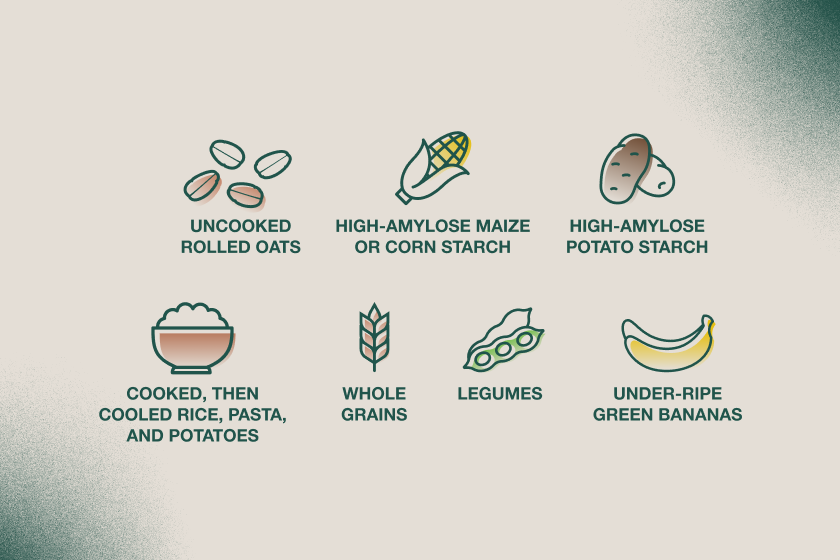
Resistant starch is found in a wide variety of food sources and starchy carbs, including:
- Whole grains (like steel cut oats & high-amylose corn)
- Raw potatoes and high-amylose potato starch
- Cooked, then cooled rice, pasta, or potatoes
- Beans and other legumes, nuts, and seeds
- Green bananas
In addition to varying food sources, there are also 5 different types of resistant starch, each of which is classified based on how it resists digestion and by its unique cellular and/or molecular makeup.
For example, RS1 resists digestion because certain plant fibers have cellular walls that act almost like protective armor against digestive enzymes. RS2 on the other hand resists digestion because of tightly-bound molecules within, often strings of glucose granules that are super compact and tough to break down as a result. RS3 meanwhile is what’s called a “retrograde starch” — it occurs in foods that have been cooked (which breaks down original RS fibers) then cooled (which welds them back together into a new form).
(We’ll hold off on discussing RS4 and RS5 for the purpose of this blog. The former is synthetically formulated and doesn’t occur in nature. The latter is sort of a catch-all for a broad mix of other starchy stragglers like starch-glycerol, starch-peptides, starch-proteins, and starch-lipid-proteins.)
Why Resistant Starch is Good for You

The reason resistant starch is good for you — and why resistant starch has so many health benefits — all has to do with your gut microbiome.
Your gut is like the command center for human health. It’s home to about 100 trillion bacteria, which are responsible for the regulation of many of our bodily functions, including:
- Immune system regulation (5, 6)
- Food digestion (7)
- Blood sugar regulation (8, 9)
- Vitamin production (10)
- Brain chemical influence (11, 12)
- Heart health management (13)
When gut bacteria are happy — aka, well-fed and thriving with lots of microbial diversity — your microbiome is considered balanced. When your microbiome is balanced, your overall health thrives.
Unfortunately, achieving and maintaining a balanced microbiome is tough. Within our modernized western diet, many of our gut flora’s favorite food sources simply don’t exist. Or, at least, they’re not all that prevalent. We’ve replaced starchy carbs with simple carbs, fiber with processed foods, whole grains with wholly scary refined concoctions, and the list goes on.
The simple truth is that gut microbes need fiber. They crave plants. The reason is because many prebiotic plant fibers — resistant starch especially — don’t arrive in your gut stripped of all their nutrients, but rather intact and ready to rumble and get their ferment on. As they do this, they produce health-boosting byproducts like short-chain fatty acids, which, as we alluded to earlier, have numerous health benefits.
In short, resistant starch is good for you because it’s the fuel your gut microbes need to do their job. And their job, in large part, is to keep you healthy!
What is the Best Resistant Starch Source Available?
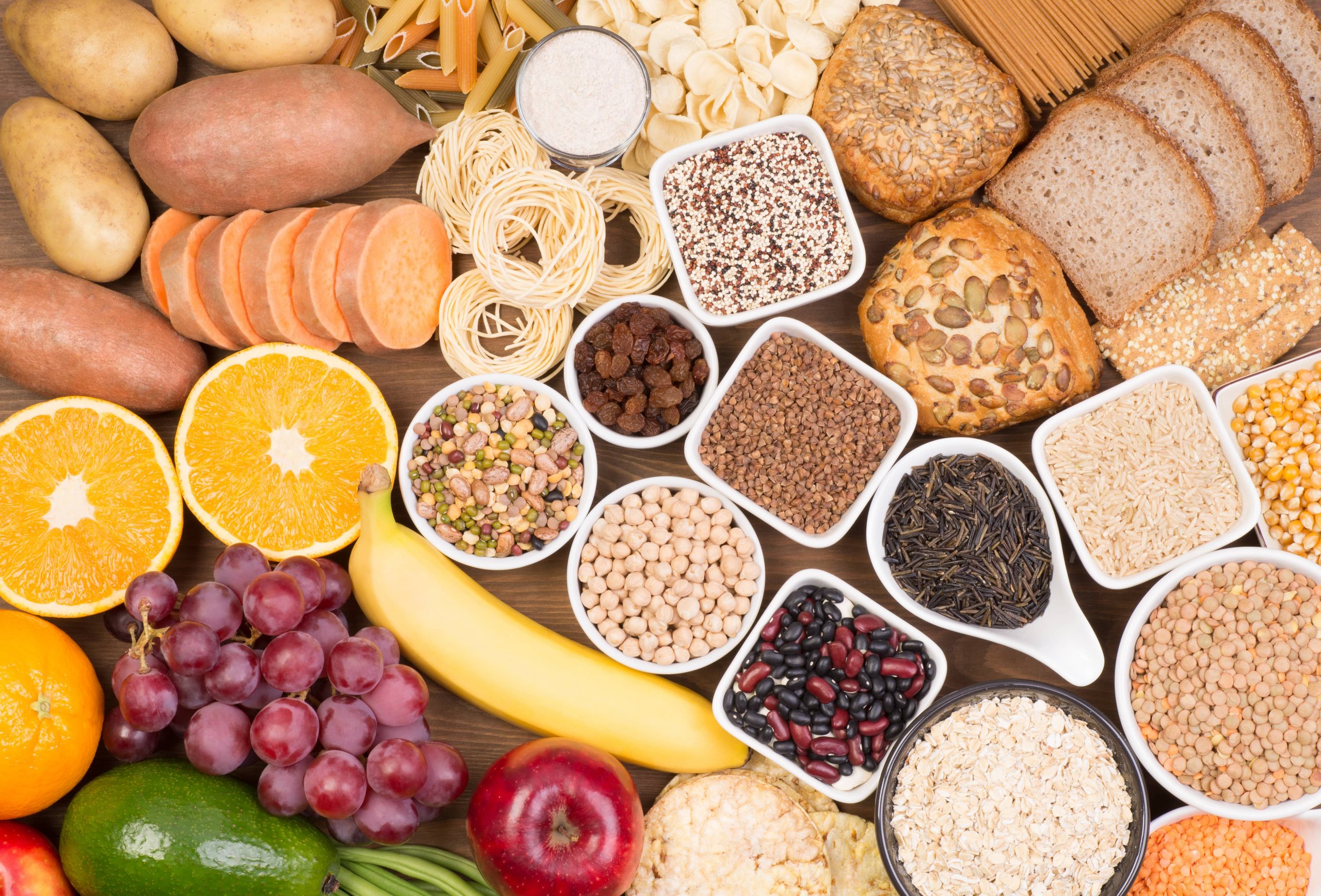
Now, about those food sources containing resistant starch. You may have noticed that some of them aren’t exactly staples of the American diet. When was the last time you chomped into a raw potato or unripe banana, for instance?
The truth is, some sources of resistant starch are difficult to incorporate into your diet naturally. And even if you can incorporate them into your diet, many of them don’t pack that much of an RS punch per serving.
For example, most beans typically contain 3-5 grams of resistant starch per serving after cooking. [14] One green banana contains about 4 grams of RS per 100 grams. Cooked lentils have about 3.4 grams. A boiled potato comes in at about 1.3 grams. [15] Grains like rice, millet, buckwheat, and bread meanwhile all contain less than 2 grams of RS per 100 grams. [16]
Many folks simply don’t consume these kinds of foods on a regular basis. So, it’s no wonder the average American only gets around 3-8 grams of RS per day! [17]
Especially when you consider that studies show health benefits of resistant starch occur with a daily intake of at least 20 grams. [17] That’s a lot of lentils!
So, how can you get more resistant starch into your diet?
Resistant Starch Supplements: What to Know
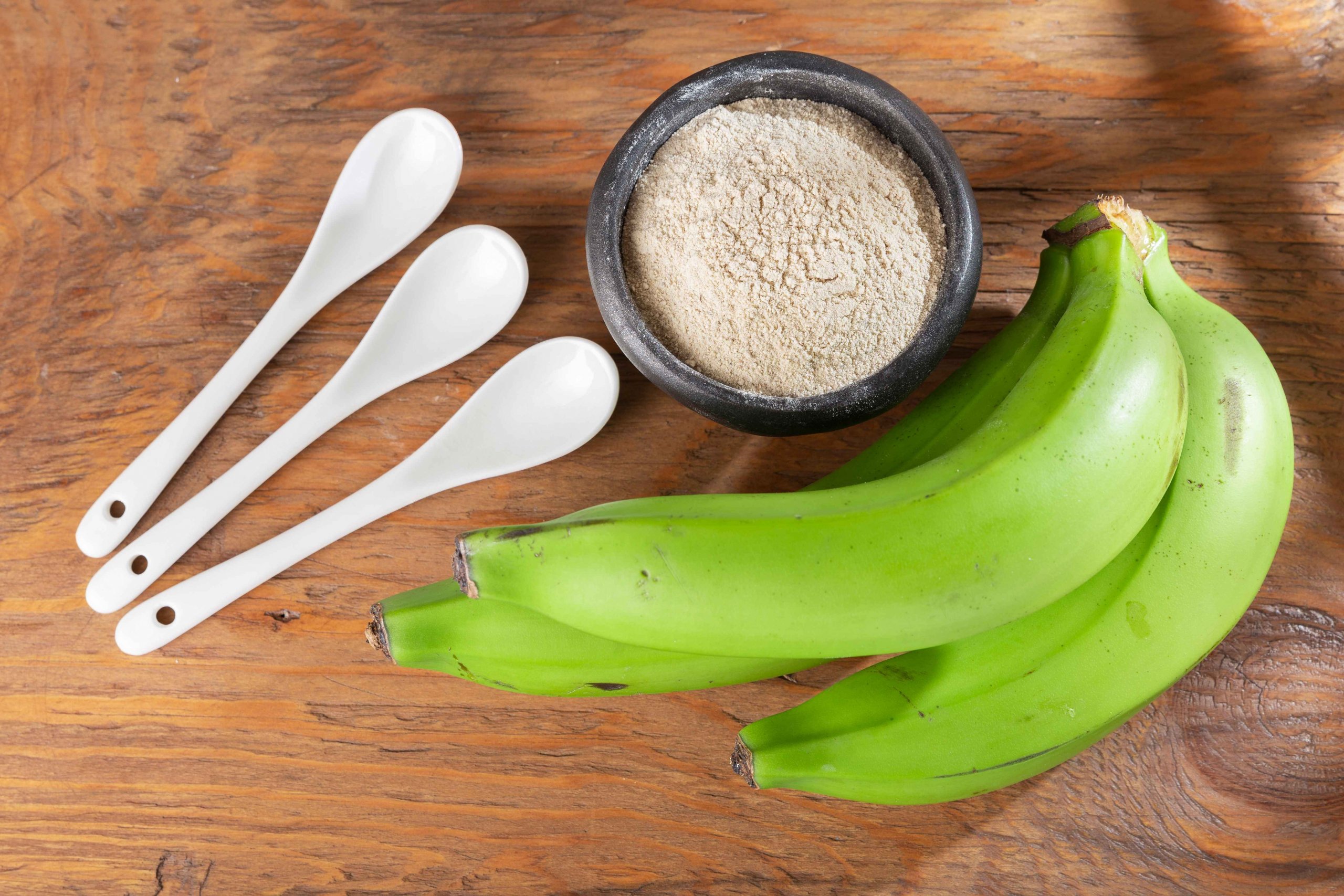 People take supplements when they’re not getting enough of something in their diets. Not a very groundbreaking statement, it’s true. But what is groundbreaking is that stat about how much resistant starch the average American gets per day: only 3-8 grams!
People take supplements when they’re not getting enough of something in their diets. Not a very groundbreaking statement, it’s true. But what is groundbreaking is that stat about how much resistant starch the average American gets per day: only 3-8 grams!
Pair that with the fact that the average American also only gets about half the daily recommended amount of dietary fiber, and you start to see what sort of public (and metabolic) health crisis we’re working with. [18]
The good news is that there are some food supplements out there with added fiber and resistant starch that are specifically designed to help fill in the resistant starch fiber gaps.
Some of these food supplements use pulverized green banana flour. Others use high-amylose potato starch. Still others use high-amylose maize or even oat beta-glucan.
What they all attempt to do is provide a highly concentrated form of prebiotic resistant starch, which people can incorporate into their lives with ease. While not all of these RS food supplements are created equally, the idea behind functional food as medicine is one that we’re huge proponents of.
RS Supplements & Functional Food
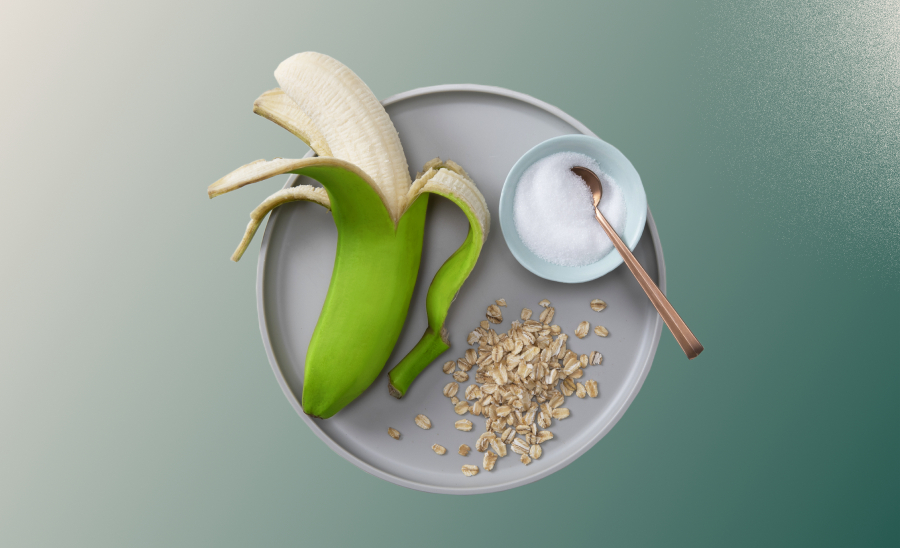
In general, we’re big advocates of a healthy whole foods diet here at Supergut. Plant fibers and plant diversity are both key to maintaining a thriving gut microbiome — not to mention fermented foods, colorful fruits and vegetables packed with phytonutrients like polyphenols, healthy fats, and more.
In short, we think Hippocrates had it right all along: “Let food be thy medicine and medicine be thy food.”
There’s nothing quite like real food to help your partners in health — your gut microbes — do their jobs. And that’s why we prefer not to think of our Shakes, Bars, and Add-to-Anything Fiber Mix as “supplements” at all. Because they aren’t. They’re real functional foods!
Why Supergut is the #1 Choice Online
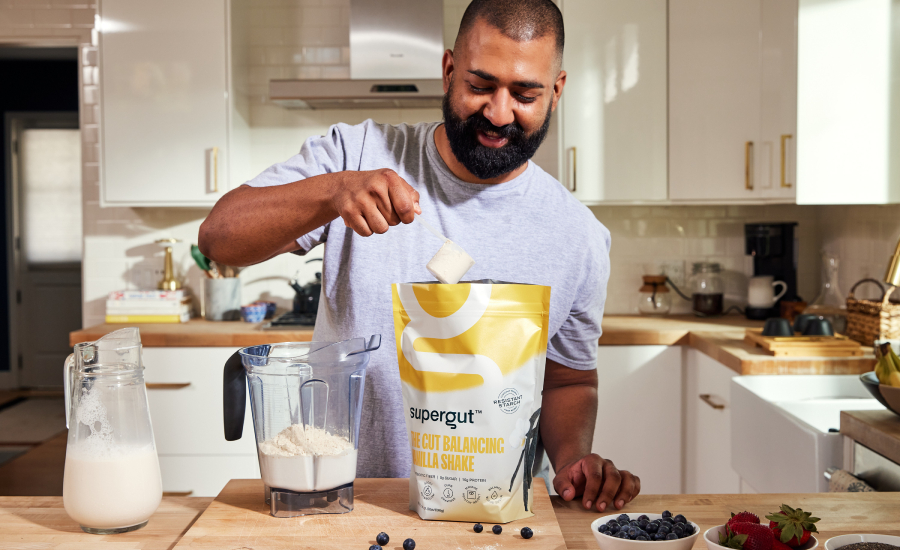
At Supergut, we’ve done a ton of research on the benefits of different dietary fibers and have specially formulated a blend (with a diversity of resistant starch and oat beta glucan!) to have great gut balancing power.
The formula also sources a low FODMAP mix of unripened green bananas, resistant potato starch, and oat beta-glucan to be about as close to “proven” as you can get when it comes to improving certain health parameters.
In fact, in our own gold-standard clinical trial at Supergut, we found that administering 20 grams of our patented resistant starch fiber blend per day over the course of 12 weeks led to an average drop of 0.7% in A1C blood sugar levels, a steady weight loss of 3lbs on average, and even positive improvements across other wellness measures like energy, sleep, and more.
Getting the Most Out of Supergut: Advice, Tips, & Tricks

When first starting out with Supergut — or any food source or supplement with added fiber — it’s a good idea to ease into it.
Low and slow is a helpful motto. As in, you’ll want to start with a low dosage. Then slowly increase your intake as you build your tolerance.
The reason is because many of us — and many of our our guts — are massively out of practice when it comes to handling fiber. Whereas our ancestors likely got somewhere around 100 grams of fiber per day, [19] we’re nowhere near that. Actually, only 5% of Americans consume the recommended daily amount of fiber, which today is a lowly 30 grams. Most Americans don’t get half that! [20]
So, it’s important to train and retrain your gut in order to handle more fiber intake without upsetting your digestive system. Thankfully, resistant starch is easier on the gut than certain other fibers. But it still helps to follow the motto of low and slow to ease into your fiber journey.
Closing Thoughts on the Best Resistant Starch Supplement
When it comes to the best sources of resistant starch — whether they’re whole foods like green bananas or functional foods like Supergut — the main goal is to strive for consistency.
Put simply, getting enough resistant starch one day, then falling off the wagon for three weeks won’t have much of a gut-healing impact. The key is to make nutrition a daily habit.
Remember: resistant starch resists digestion, and gut bacteria can’t resist resistant starch.
By feeding them prebiotic fibers, you can nourish your gut, unleash short-chain fatty acids like butyrate into your body, and improve your overall metabolic health.
What are you waiting for? Try Supergut today!








